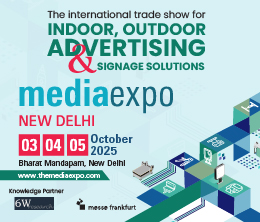Indonesia Skin Care Market (2025-2031) | Analysis, Forecast, Growth, Companies, Value, Industry, Share, Trends, Revenue, Outlook & Size
Market Forecast By Product Types (Face Creams, Body Lotions), By Distribution Channel (Online, Offline) And Competitive Landscape
| Product Code: ETC010428 | Publication Date: Jul 2023 | Updated Date: Apr 2025 | Product Type: Report | |
| Publisher: 6Wresearch | No. of Pages: 70 | No. of Figures: 35 | No. of Tables: 5 | |
Indonesia Skin Care Market Highlights
| Report Name | Indonesia Skin Care Market |
| Forecast period | 2025-2031 |
| CAGR | 4.58% |
| Growing Sector | Personal Care |
Topics Covered in the Indonesia Skin Care Market Report
Indonesia Skin Care Market report thoroughly covers the market By Product types and by Distribution channel. The market report provides an unbiased and detailed analysis of the ongoing market trends, opportunities/high growth areas, and market drivers which would help the stakeholders to devise and align their market strategies according to the current and future market dynamics.
Indonesia Skin Care Market Synopsis
Indonesia Skin Care Market is experiencing significant growth, driven by rising consumer awareness of skin health and wellness. The increasing demand for premium and organic skin care products, along with a growing middle-class population, is further fueling Indonesia Skin Care Market Growth. Furthermore, the influence of social media and the popularity of beauty trends, particularly among younger consumers, are contributing to this growth.
According to 6Wresearch, the Indonesia Skin Care Market size is expected to gain traction, reaching at a CAGR of 4.58% during the forecast period 2025-2031. The expansion of the market is driven by several key factors, including the growing consumer awareness regarding skin health and the rising demand for high-quality, natural, and organic products. As the middle class continues to expand, consumers are becoming more willing to invest in premium skincare products. Moreover, the increasing influence of beauty trends, particularly those propagated through social media platforms, is boosting product visibility and encouraging consumer spending on skincare products. Furthermore, with a rising interest in wellness and self-care routines, demand for specialized skincare products such as anti-aging, whitening, and moisturizing creams is increasing.
Despite the positive growth outlook, the market faces certain challenges. The presence of counterfeit and substandard products in the market poses a significant threat to consumer safety and brand reputation. Additionally, intense competition from both international and local brands creates price sensitivity among consumers, potentially affecting profit margins for companies. Regulatory complexities also present a challenge, as brands must comply with local regulations related to product formulation, safety, and marketing. Despite these challenges, the overall market prospects remain positive, supported by the expanding retail sector and growing e-commerce channels.
Indonesia Skin Care Market Trends
Indonesia skin care market is witnessing notable trends that are shaping its growth trajectory. Increasing consumer awareness about skin health, along with a rising demand for natural and organic products, is driving the market. A growing preference for eco-friendly and cruelty-free skincare solutions is evident, as consumers become more conscious of sustainability. Additionally, the influence of social media platforms, especially beauty influencers and skincare tutorials, has led to an uptick in product trials and purchasing behavior, particularly among younger generations. The demand for anti-aging, moisturizing, and skin-brightening products is on the rise, reflecting changing consumer concerns. Furthermore, the expansion of e-commerce platforms and online sales channels has revolutionized the way consumers purchase skin care products, offering convenience and access to a wider range of brands. These trends indicate a promising outlook for the Indonesia skin care market growth.
Investments Opportunities in the Indonesia Skin Care Market
Indonesia skin care market presents significant investment opportunities driven by growing consumer demand for premium, organic, and natural products. Companies can capitalize on the rising interest in eco-friendly and sustainable skincare options by developing products that align with these values. The increasing popularity of e-commerce platforms offers potential for expansion in online sales, providing access to a wider consumer base, particularly among younger, tech-savvy consumers. Additionally, there is a growing demand for specialized skin care solutions, such as anti-aging, skin-brightening, and acne treatment products, which opens avenues for innovation and product diversification. With the expansion of the middle class and a greater focus on wellness and self-care, investment in both established and emerging skin care brands presents substantial growth potential. Strategic partnerships with local retailers and beauty influencers can also enhance brand visibility and market penetration.
Leading Players in the Indonesia Skin Care Market
Indonesia skin care market is characterized by the presence of several prominent players, both international and local, that are driving market growth. Major global brands such as L’Oréal, Unilever, Procter & Gamble, and Estée Lauder have a strong foothold in the market, offering a wide range of skincare products. These companies benefit from brand recognition, extensive distribution networks, and continuous product innovation to cater to evolving consumer preferences. In addition, local players like Wardah, Sarayu, and Mustika Ratu have successfully established themselves by focusing on products that cater to local tastes, cultural preferences, and the demand for halal and natural ingredients. These players capitalize on their deep understanding of the Indonesian consumer base and are well-positioned to capture the growing demand for affordable, effective skincare solutions. The competitive landscape is further shaped by e-commerce platforms, enabling companies to reach a wider audience.
Government Regulations
The government regulations governing the Indonesia skin care industry are designed to ensure product safety, consumer protection, and market integrity. The National Agency of Drug and Food Control (BPOM) oversees the registration and approval of skincare products, ensuring they meet safety and quality standards before they can be sold in the market. Regulations also mandate proper labeling, including ingredient disclosure and expiration dates, to protect consumers and promote transparency. Additionally, skincare products must comply with local guidelines on advertising and marketing to avoid misleading claims. For companies introducing new products, compliance with environmental and sustainability standards, particularly concerning packaging, is becoming increasingly important. As the market grows, the Indonesian government is expected to enforce stricter regulations to combat the spread of counterfeit and substandard products, ensuring that only safe and effective skincare products reach consumers. These regulations aim to safeguard public health and build consumer trust in the industry.
Future Insights of the Indonesia Skin Care Market
The future of the Indonesia skin care market is promising, with continued growth expected due to evolving consumer preferences and increasing disposable incomes. Demand for natural, organic, and eco-friendly products will continue to rise as consumers become more conscious of sustainability and health. Additionally, the popularity of specialized skincare solutions, such as anti-aging, skin-brightening, and acne treatments, is expected to drive market expansion. The growing influence of social media and beauty influencers will further boost product awareness, encouraging consumers to explore new and innovative skincare products. E-commerce platforms will play a crucial role in reshaping the market by providing easier access to a broader range of products, especially among younger, tech-savvy consumers. As the middle class expands and awareness of skin health increases, the market will witness more investments, leading to product diversification and enhanced competition, shaping a dynamic and vibrant landscape.
Market Segmentation Analysis
The Report offers a comprehensive study of the subsequent market segments and their leading categories.
Face cream to Dominate the Market-By Product types
Face cream category is expected to lead the market in the coming years due to the growing consumer focus on facial care products, driven by the increasing demand for solutions related to anti-aging, skin-brightening, and moisturizing.
Offline to Dominate the Market- -By Distribution channel
According to Saurabh, Senior Research Analyst, 6Wresearch, the offline distribution channel is expected to grow due to the strong presence of traditional retail stores, supermarkets, and pharmacies where consumers prefer to purchase skincare products. Indonesia skin care market Share is dominated by face creams and body lotions, with growing demand for natural and specialized products.
Key Attractiveness of the Report
- 10 Years of Market Numbers.
- Historical Data Starting from 2021 to 2024.
- Base Year: 2024
- Forecast Data until 2031.
- Key Performance Indicators Impacting the market.
- Major Upcoming Developments and Projects.
Key Highlights of the Report:
- Indonesia Skin Care Market Outlook
- Market Size of Indonesia Skin Care Market, 2024
- Forecast of Indonesia Skin Care Market, 2031
- Historical Data and Forecast of Indonesia Skin Care Revenues & Volume for the Period 2021-2031
- Indonesia Skin Care Market Trend Evolution
- Indonesia Skin Care Market Drivers and Challenges
- Indonesia Skin Care Price Trends
- Indonesia Skin Care Porter's Five Forces
- Indonesia Skin Care Industry Life Cycle
- Historical Data and Forecast of Indonesia Skin Care Market Revenues & Volume By Product Types for the Period 2021-2031
- Historical Data and Forecast of Indonesia Skin Care Market Revenues & Volume By Face Creams for the Period 2021-2031
- Historical Data and Forecast of Indonesia Skin Care Market Revenues & Volume By Body Lotions for the Period 2021-2031
- Historical Data and Forecast of Indonesia Skin Care Market Revenues & Volume By Distribution Channel for the Period 2021-2031
- Historical Data and Forecast of Indonesia Skin Care Market Revenues & Volume By Online for the Period 2021-2031
- Historical Data and Forecast of Indonesia Skin Care Market Revenues & Volume By Offline for the Period 2021-2031
- Indonesia Skin Care Import Export Trade Statistics
- Market Opportunity Assessment By Product Types
- Market Opportunity Assessment By Distribution Channel
- Indonesia Skin Care Top Companies Market Share
- Indonesia Skin Care Competitive Benchmarking By Technical and Operational Parameters
- Indonesia Skin Care Company Profiles
- Indonesia Skin Care Key Strategic Recommendations
Market Segmentation Analysis
The Report offers a comprehensive study of the subsequent market segments and their leading categories.
By Product Types
- Face Cream
- Body Lotions
By Distribution Channel
- Online
- Offline
Indonesia Skin Care Market (2025-2031): FAQs
| 1 Executive Summary |
| 2 Introduction |
| 2.1 Key Highlights of the Report |
| 2.2 Report Description |
| 2.3 Market Scope & Segmentation |
| 2.4 Research Methodology |
| 2.5 Assumptions |
| 3 Indonesia Skin Care Market Overview |
| 3.1 Indonesia Country Macro Economic Indicators |
| 3.2 Indonesia Skin Care Market Revenues & Volume, 2020 & 2031F |
| 3.3 Indonesia Skin Care Market - Industry Life Cycle |
| 3.4 Indonesia Skin Care Market - Porter's Five Forces |
| 3.5 Indonesia Skin Care Market Revenues & Volume Share, By Product Types, 2020 & 2031F |
| 3.6 Indonesia Skin Care Market Revenues & Volume Share, By Distribution Channel, 2020 & 2031F |
| 4 Indonesia Skin Care Market Dynamics |
| 4.1 Impact Analysis |
| 4.2 Market Drivers |
| 4.3 Market Restraints |
| 5 Indonesia Skin Care Market Trends |
| 6 Indonesia Skin Care Market, By Types |
| 6.1 Indonesia Skin Care Market, By Product Types |
| 6.1.1 Overview and Analysis |
| 6.1.2 Indonesia Skin Care Market Revenues & Volume, By Product Types, 2021-2031F |
| 6.1.3 Indonesia Skin Care Market Revenues & Volume, By Face Creams, 2021-2031F |
| 6.1.4 Indonesia Skin Care Market Revenues & Volume, By Body Lotions, 2021-2031F |
| 6.2 Indonesia Skin Care Market, By Distribution Channel |
| 6.2.1 Overview and Analysis |
| 6.2.2 Indonesia Skin Care Market Revenues & Volume, By Online, 2021-2031F |
| 6.2.3 Indonesia Skin Care Market Revenues & Volume, By Offline, 2021-2031F |
| 7 Indonesia Skin Care Market Import-Export Trade Statistics |
| 7.1 Indonesia Skin Care Market Export to Major Countries |
| 7.2 Indonesia Skin Care Market Imports from Major Countries |
| 8 Indonesia Skin Care Market Key Performance Indicators |
| 9 Indonesia Skin Care Market - Opportunity Assessment |
| 9.1 Indonesia Skin Care Market Opportunity Assessment, By Product Types, 2020 & 2031F |
| 9.2 Indonesia Skin Care Market Opportunity Assessment, By Distribution Channel, 2020 & 2031F |
| 10 Indonesia Skin Care Market - Competitive Landscape |
| 10.1 Indonesia Skin Care Market Revenue Share, By Companies, 2024 |
| 10.2 Indonesia Skin Care Market Competitive Benchmarking, By Operating and Technical Parameters |
| 11 Company Profiles |
| 12 Recommendations |
| 13 Disclaimer |
- Single User License$ 1,995
- Department License$ 2,400
- Site License$ 3,120
- Global License$ 3,795
Search
Related Reports
- Portugal Electronic Document Management Market (2025-2031) | Strategy, Consumer Insights, Analysis, Investment Trends, Opportunities, Growth, Size, Share, Industry, Revenue, Segments, Value, Segmentation, Supply, Forecast, Restraints, Outlook, Competition, Drivers, Trends, Demand, Pricing Analysis, Competitive, Strategic Insights, Companies, Challenges
- France Electronic Document Management Market (2025-2031) | Strategy, Consumer Insights, Analysis, Investment Trends, Opportunities, Growth, Size, Share, Industry, Revenue, Segments, Value, Segmentation, Supply, Forecast, Restraints, Outlook, Competition, Drivers, Trends, Demand, Pricing Analysis, Competitive, Strategic Insights, Companies, Challenges
- Portugal Occupational Health & Safety Services Market (2025-2031) | Strategy, Consumer Insights, Analysis, Investment Trends, Opportunities, Growth, Size, Share, Industry, Revenue, Segments, Value, Segmentation, Supply, Forecast, Restraints, Outlook, Competition, Drivers, Trends, Demand, Pricing Analysis, Competitive, Strategic Insights, Companies, Challenges
- Netherlands Occupational Health and Safety Services Market (2025-2031) | Strategy, Consumer Insights, Analysis, Investment Trends, Opportunities, Growth, Size, Share, Industry, Revenue, Segments, Value, Segmentation, Supply, Forecast, Restraints, Outlook, Competition, Drivers, Trends, Demand, Pricing Analysis, Competitive, Strategic Insights, Companies, Challenges
- Belgium and Luxembourg Facility Management Market (2025-2031) | Strategy, Consumer Insights, Analysis, Investment Trends, Opportunities, Growth, Size, Share, Industry, Revenue, Segments, Value, Segmentation, Supply, Forecast, Restraints, Outlook, Competition, Drivers, Trends, Demand, Pricing Analysis, Competitive, Strategic Insights, Companies, Challenges
- Russia Women Intimate Apparel Market (2025-2031) | Strategy, Consumer Insights, Analysis, Investment Trends, Opportunities, Growth, Size, Share, Industry, Revenue, Segments, Value, Segmentation, Supply, Forecast, Restraints, Outlook, Competition, Drivers, Trends, Demand, Pricing Analysis, Competitive, Strategic Insights, Companies, Challenges
- Africa Chocolate Market (2025-2031) | Size, Share, Trends, Growth, Revenue, Analysis, Forecast, industry & Outlook
- Global Hydroxychloroquine And Chloroquine Market (2025-2031) | Industry, Trends, Size, Outlook, Growth, Value, Companies, Revenue, Analysis, Share, Forecast
- Saudi Arabia Plant Maintenance Market (2025-2031) | Industry, Size, Growth, Revenue, Value, Companies, Forecast, Analysis, Share & Trends
- Taiwan Electric Truck Market (2025-2031) | Outlook, Industry, Revenue, Size, Forecast, Growth, Analysis, Share, Companies, Value & Trends
Industry Events and Analyst Meet
Our Clients
Whitepaper
- Middle East & Africa Commercial Security Market Click here to view more.
- Middle East & Africa Fire Safety Systems & Equipment Market Click here to view more.
- GCC Drone Market Click here to view more.
- Middle East Lighting Fixture Market Click here to view more.
- GCC Physical & Perimeter Security Market Click here to view more.
6WResearch In News
- Doha a strategic location for EV manufacturing hub: IPA Qatar
- Demand for luxury TVs surging in the GCC, says Samsung
- Empowering Growth: The Thriving Journey of Bangladesh’s Cable Industry
- Demand for luxury TVs surging in the GCC, says Samsung
- Video call with a traditional healer? Once unthinkable, it’s now common in South Africa
- Intelligent Buildings To Smooth GCC’s Path To Net Zero













